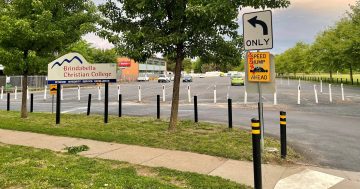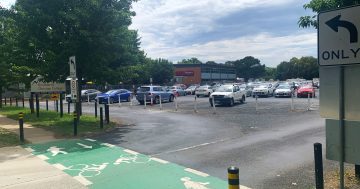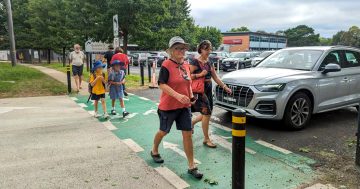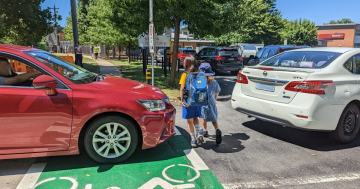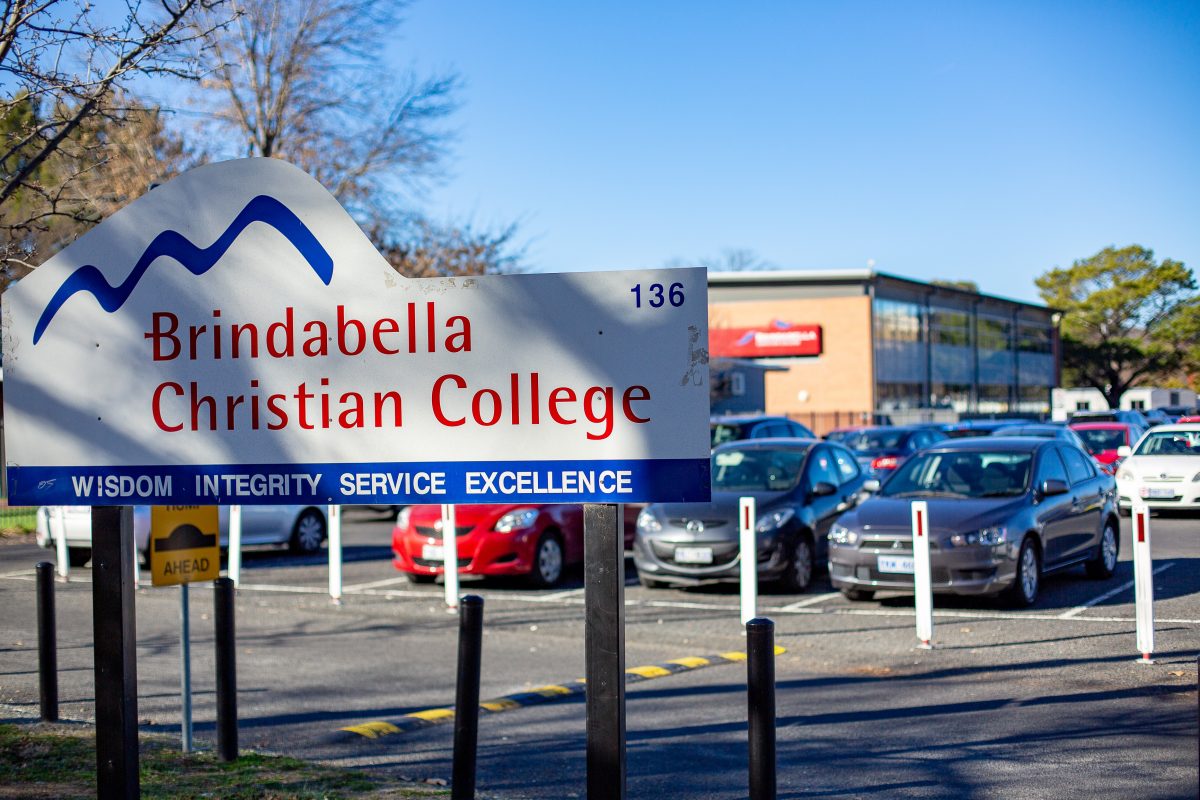
The infamous Brindabella Christian College car park: a “trifecta of non-compliance”. Photo: Region.
How did it come to this?
The decision against Brindabella Christian College in the ACT Civil and Administrative Tribunal is welcome because it sends a message to private entities that they must follow the planning and development rules and not just acquire land for their own purposes by stealth.
But it really should not have been up to the Lyneham Community Association to fight this battle, given the number of times it pointed out to the government and its agencies that the college’s land creep and the construction of a sealed car park were illegal.
Throughout this saga, the government and the school maintained the fiction that this was a public facility when it was clearly for the school’s use.
The Environment, Planning and Sustainable Development Directorate and Transport Canberra and City Services treated the project as a fait accompli and correspondence between agencies showed an unwillingness to grapple with the issue or the planning principles and rules raised repeatedly by the LCA.
Once the bitumen was laid and the school community started using it, closing it down would have created just another headache.
Now that ACAT has ruled that’s exactly what must happen, the headache of distributing those pick-up and drop-off parks in surrounding streets or putting these kids on public transport is real.
But ignoring what the LCA called a “trifecta of non-compliance” would have been worse and opened the floodgates for the surreptitious acquisition of public land and non-approved development across the Territory.
Build it first and pray that it’s just too much fuss to do anything about it would have been the attitude.
ACAT agreed with the contention that the car park was in breach of the purpose clause of the sublease between the school and the Territory, its development was prohibited as the land is zoned as PRZ1 (urban open space), and a development application was required but never supplied.
This represents a monumental failure of regulatory duty that shows that the agencies involved need to get their houses in order, especially as the ACT adopts a new planning system.
The car park fiasco is not the kind of outcome that should be repeated.
At least the other school car park decision – Canberra Grammar’s failed bid to formalise the temporary car park opposite its grounds on Monaro Crescent – was made by the Planning and Land Authority, and at least there was a development application.
But the principle at stake was the same – the creep of private interests on public land.
Yet the college may still be given an avenue out of having to rip up the bitumen and restore the land.
Under the controlled activity order, the car park must be demolished and the land reinstated 12 months after the order must be made unless the college obtains development approval to use the land.
Will the college seek that approval, and will the planning authority grant it?
But it will still have to remove the car park driveway and reinstate the kerb and footpath before school starts in 2024.
The government and bureaucracy should reflect deeply on this self-created mess and heed its lessons.
Private schools and other organisations should now be on notice: hands off public land and stick to the rules. They are there for a reason.












